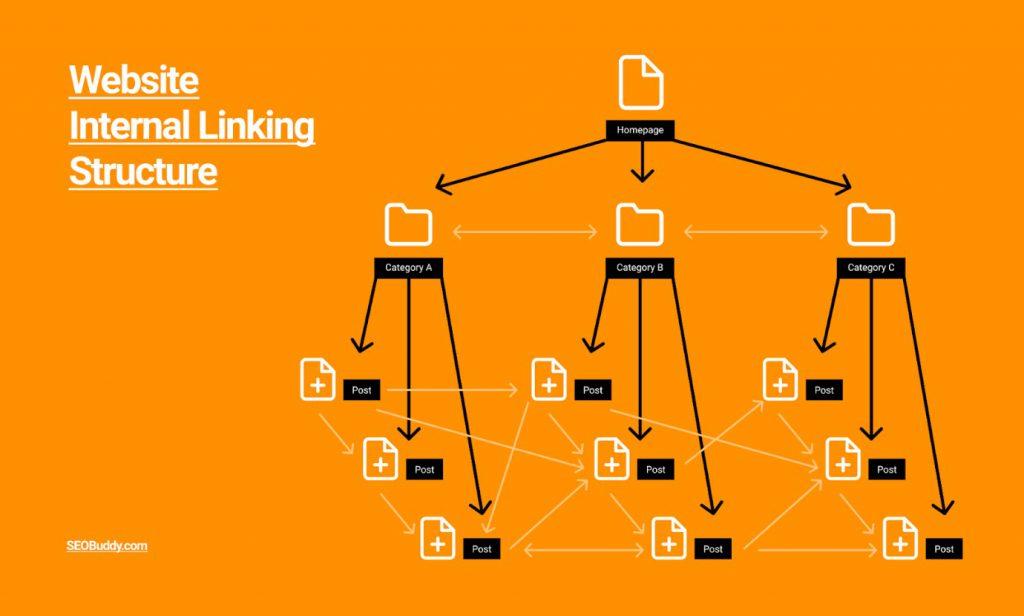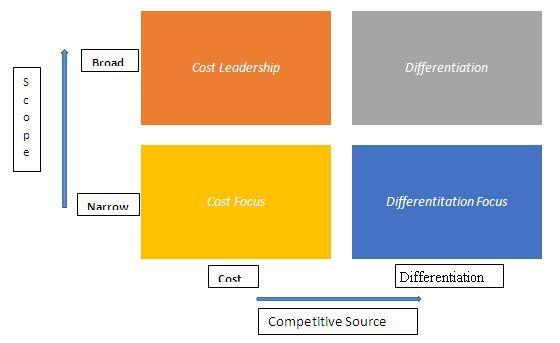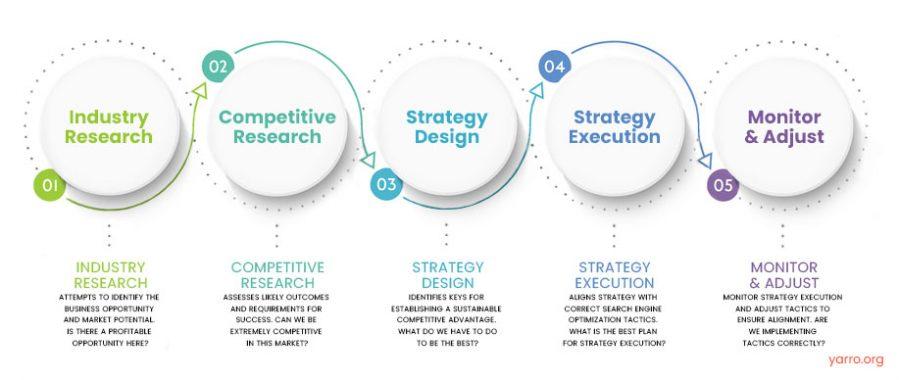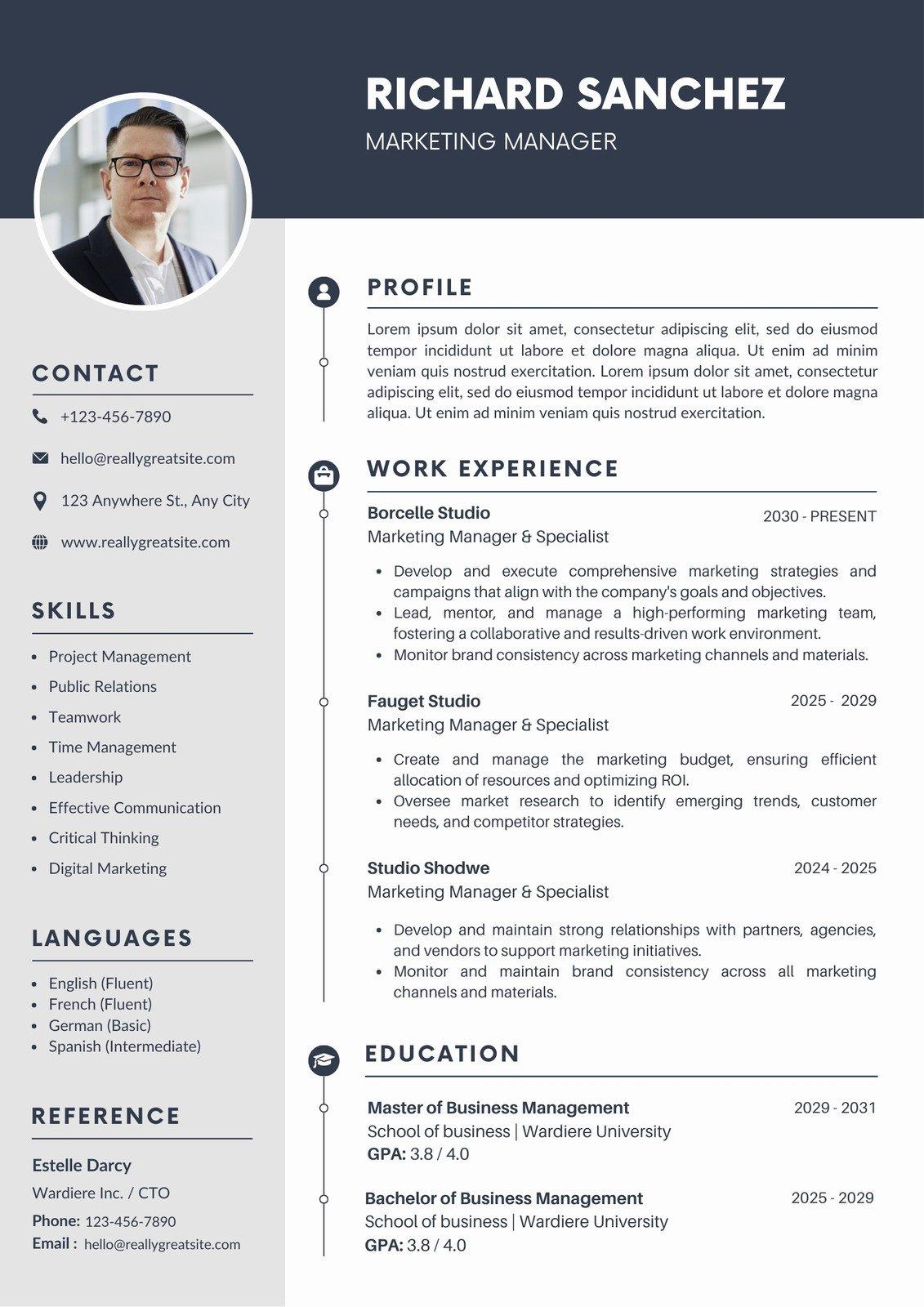Are you tired of pouring your heart and soul into your website, only to see a trickle of traffic? You’re not alone! In the vast ocean of online content, standing out can often feel like searching for a needle in a haystack. While Google provides some guidance on SEO, there are countless unspoken techniques that coudl supercharge your traffic and boost your rankings. You might be wondering, “What are these secret strategies?” Well, you’re in the right place! In this article, we’ll unveil 12 actionable ways to enhance your SEO traffic—tips that Google won’t explicitly tell you. So, whether you’re a seasoned marketer or just starting out, grab a cup of coffee and get ready to transform your website into a traffic magnet!
Understanding the SEO Landscape Beyond Google Guidelines
When it comes to boosting your websiteS visibility, most people think solely about Google’s guidelines. However, the SEO landscape is far broader. To truly excel, it’s crucial to understand other strategies that can enhance your traffic and engagement.
First, consider the power of social media. while Google may not give it much weight in its algorithms, platforms like Facebook, Twitter, and Instagram can drive significant traffic to your site. Creating captivating content that resonates with your audience on these platforms can enhance visibility, generate shares, and increase referral traffic.
Next, explore the advantages of local SEO. Even if your buisness isn’t purely local, incorporating local keywords can help attract a more targeted audience. Use tools to discover local search trends and optimize your content accordingly.This approach not only fulfills a need but also establishes your authority in niche markets.
Another underutilized strategy is content repurposing. Take your existing content and transform it into various formats: infographics, podcasts, or videos. This not only captures diffrent audiences but also extends the lifespan of your content. By doing so, you can tap into new traffic streams without starting from scratch.Consider the effectiveness of each format and tailor your messaging accordingly.
| Content Type | Benefits |
|---|---|
| Blog Posts | In-depth insights, SEO benefits |
| Infographics | Visual appeal, shareability |
| Videos | Higher engagement, versatile platforms |
| Podcasts | Growing medium, loyal audience |
Another avenue worth exploring is collaborative content. Partner with influencers or industry experts to co-create articles or joint webinars. This not only builds credibility but also exposes your brand to a wider audience. Leverage their platforms to drive traffic back to your site and increase your authority.
Lastly, don’t overlook the importance of email marketing.While not customary SEO, a well-crafted email list can bring consistent traffic to your site. Segment your audience and provide tailored content that encourages clicks. The more engaged your subscribers are, the more likely they will share your content within their networks.
Crafting Content That Speaks to Your Audience’s Needs
Understanding your audience’s needs is the cornerstone of effective content creation. When crafting content that resonates, it’s essential to step into the shoes of your audience and anticipate their questions, desires, and pain points. By doing this, you can create valuable, relevant content that not only attracts clicks but also keeps readers engaged.
Start by conducting thorough audience research. Utilize tools like surveys, social media polls, and even direct feedback forms to gather insights about your readers. What challenges are they facing? What solutions are they seeking? By understanding these nuances,you can tailor your content to address specific needs,making your audience feel heard and valued.
next, focus on creating compelling headlines that speak directly to your audience. A catchy title can considerably increase click-through rates.Use language that highlights a benefit or addresses a problem. For example, rather of a generic title, consider something more direct, like “Unlocking the Secrets to Doubling Your Traffic in Just 30 Days.” This not only grabs attention but also promises real value.
Also, consider the format of your content. Different people consume facts in various ways; some prefer swift reads, while others like detailed guides. Experiment with formats such as:
- How-to guides that provide step-by-step solutions.
- Infographics to visually present complex information.
- Video content for those who prefer auditory and visual learning.
Don’t underestimate the power of storytelling. personal anecdotes or customer success stories can create a deeper connection with your audience. When readers see themselves in your narratives, they’re more likely to engage with the content and share it within their networks.
always include a call to action (CTA) that resonates with your audience’s needs. Whether it’s subscribing to a newsletter, downloading a free resource, or participating in a discussion, effective CTAs guide readers on their journey beyond the content. Make sure your CTAs are clear, concise, and compelling, providing a strong reason for your audience to take the next step.
By prioritizing your audience’s needs in your content strategy, you’re not only enhancing user experience but also driving more SEO traffic to your site.Remember,when your content speaks directly to your audience,they will respond.
harnessing the Power of Long-Tail Keywords for Better Reach
When it comes to optimizing your content for search engines, many people overlook the significance of long-tail keywords. These phrases, usually consisting of three or more words, may not have the same search volume as their shorter counterparts, but they can be a goldmine for attracting targeted traffic. Understanding how to leverage these keywords can elevate your SEO game and bring in users who are genuinely interested in what you offer.
One of the biggest advantages of long-tail keywords is their specificity. For example, instead of targeting a broad term like “shoes,” you might focus on “cozy running shoes for flat feet.” while the latter may attract fewer searches, the probability of converting visits into sales increases dramatically. This is becuase users searching for specific phrases are often further along in the buying cycle and know exactly what they want.
Consider conducting thorough keyword research to identify relevant long-tail phrases pertinent to your niche. Tools like Google keyword Planner, SEMrush, and Ubersuggest can provide valuable insights. Once you discover these keywords, integrate them naturally into your content, including titles, headings, and meta descriptions.This not only improves your chances of ranking for these terms but also enhances the user experience by directly addressing what they’re searching for.
Another effective strategy is to create content that answers specific questions. Many long-tail keywords stem from queries that potential customers have. for instance,if you run a skincare blog,writing posts that respond to questions like “How to treat dry skin in winter?” or “Best anti-aging products for sensitive skin” can help you capture a targeted audience. Here’s a simple table that illustrates how this works:
| Keyword Type | Potential Content Ideas |
|---|---|
| how-to Queries | Step-by-step guides |
| Comparative Searches | Product comparison articles |
| Location-based Searches | Local service reviews |
| Problem Solving | Tips and tricks for common issues |
Don’t forget to promote your long-tail keyword content through various channels. Share it on social media, connect with influencers in your niche, and participate in online communities where your target audience hangs out. The more visibility your content receives, the more likely it is to attract relevant traffic—and ultimately, higher conversion rates.
harnessing the power of long-tail keywords is not just about improving your SEO; it’s about connecting with your audience in a meaningful way. By focusing on specificity,answering questions,and promoting your content effectively,you can drive qualified traffic to your site and establish yourself as an authority in your niche.

Building a Strong Internal linking Structure for SEO Success
When it comes to optimizing your website for search engines, one of the most overlooked strategies is creating a robust internal linking structure. This isn’t just about connecting your pages; it’s about weaving a web that enhances user experience and signals to search engines the importance of each page on your site.
A well-planned internal linking strategy can:
- Boost Page Authority: Distributing link equity throughout your site helps elevate the authority of less popular pages.
- Improve Crawlability: Search engines use links to navigate your site, so a strong internal structure ensures that all your critically important content gets indexed.
- Enhance User Experience: Providing relevant links within your content keeps users engaged and encourages them to explore more of your site.
To build an effective internal linking strategy, consider the following:
- Prioritize Important Pages: Identify key pages on your site that you want to rank higher and create links to them from other relevant content.
- Use Descriptive Anchor Text: Instead of generic phrases like “click here,” use descriptive keywords that inform users (and search engines) about the linked content.
- Aim for Contextual Relevance: Link to pages that are contextually relevant to the content for better engagement and SEO impact.
- Maintain a Logical Hierarchy: Create a clear structure where top-level pages link to relevant subpages, ensuring a logical flow of information.
Here’s a quick look at how to set up your internal links efficiently:
| Step | Description |
|---|---|
| 1 | Conduct a content audit to identify existing pages and their performance. |
| 2 | Map out a linking strategy focusing on cornerstone content and related pages. |
| 3 | Implement links in a natural way within your content, avoiding keyword stuffing. |
| 4 | Regularly review and update links to ensure they remain relevant and functional. |
Don’t underestimate the power of internal linking. By effectively guiding both users and search engines through your site, you not only enhance the user experience but also significantly improve your chances of SEO success. Every link is a pathway to deeper engagement and higher rankings—make sure you’re paving the way!
Leveraging User Experience to boost Your Search Rankings
Creating a website that offers an exceptional user experience is not just about aesthetics; it plays a critical role in improving your search engine rankings. When users visit your site, their engagement signals can inform search engines about the quality of your content. Here are some effective strategies to enhance user experience and, consequently, your SEO performance:
- Optimize Page Load Speed: Slow-loading websites frustrate users and lead to high bounce rates. Use tools like Google PageSpeed Insights to identify areas for enhancement and ensure your pages load swiftly.
- Mobile Responsiveness: With an increasing number of users accessing websites via mobile devices, ensure your design is mobile-friendly. A responsive design not only improves user experience but is also favored by search engines.
- Intuitive Navigation: Make it easy for users to find what they’re looking for. Use clear categories,drop-down menus,and a search bar to help visitors navigate your site effortlessly.
- Engaging Content Layout: Break up your text with headings, bullet points, and images. A well-structured layout keeps users engaged and encourages them to read more.
- Enhanced Readability: Use a legible font size and style,appropriate contrast,and sufficient white space. Content that’s easy to read keeps users on your site longer.
Another crucial aspect is the integration of interactive elements. Consider incorporating features such as:
- Quizzes and Polls: These not only engage users but also provide valuable insights into their preferences.
- Comment Sections: Allow users to leave feedback or ask questions,fostering a sense of community and encouraging return visits.
- live Chat Options: Offering real-time support can significantly enhance user satisfaction, leading to longer session durations.
Don’t overlook the importance of high-quality visuals.Images, videos, and infographics can make your content more appealing and digestible. Ensure these elements are optimized for fast loading times and relevant to your content to keep users engaged.
consider implementing a personalization strategy. Tailoring content and recommendations to individual users can enhance their experience and encourage them to explore more of your site, reducing bounce rates and boosting your rankings. use cookies or user accounts to track behavior and preferences.
| User Experience Strategies | Benefits for SEO |
|---|---|
| Page Load Speed | Reduces bounce rate, improves rankings |
| Mobile Responsiveness | Increases mobile traffic, improves usability |
| Intuitive Navigation | Enhances user engagement, lowers exit rates |
| Interactive Elements | Encourages longer time on site, boosts return visits |
| Personalization | Increases user satisfaction, encourages repeat traffic |

Utilizing Social Signals to Enhance Your SEO Strategy
In today’s digital landscape, social signals are becoming increasingly vital to your SEO strategy. While Google hasn’t explicitly confirmed that social media activity directly impacts search rankings, the correlation between social engagement and visibility is undeniable.By leveraging social signals, you can enhance your content’s reach and improve your overall SEO efforts.
Start by focusing on the following key aspects to harness the power of social media:
- Shareable Content: Create content that resonates with your audience. Infographics, videos, and compelling articles are more likely to be shared, increasing your visibility.
- Engagement: Foster discussions on social platforms. Respond to comments and encourage shares to boost your post’s visibility.
- Influencer Collaborations: Partnering with influencers can amplify your content reach. Their endorsement can lead to increased traffic and higher engagement rates.
- Utilize Hashtags: Use relevant hashtags to expand your content’s reach. This helps users discover your posts on platforms like Twitter and Instagram.
Additionally, consider implementing the following strategies:
- Social Bookmarking: Share your blog posts on popular social bookmarking sites like Reddit and StumbleUpon. This drives traffic and can lead to backlinks.
- Content Promotion: Regularly promote your existing blog posts on your social media profiles. Tailor your message to fit each platform for better engagement.
- Regular Posting: Consistency is key. Maintain a regular posting schedule to keep your audience engaged and your brand top-of-mind.
To track the effectiveness of your social signals, consider creating a simple table that outlines your social media engagement alongside your website traffic metrics:
| Platform | Engagement Rate (%) | Traffic to Site |
|---|---|---|
| 15 | 300 visits | |
| 20 | 250 visits | |
| 25 | 400 visits |
By analyzing this data, you can identify which platforms drive the most traffic and engagement, allowing you to refine your strategies accordingly. Ultimately, leveraging social signals not only enhances your SEO but also cultivates a loyal community around your brand.

Optimizing for Voice Search in a Changing Digital World
Adapting to Voice Search Trends
As digital interactions evolve, voice search is becoming a dominant way for users to find information. With the rise of smart speakers and mobile voice assistants,optimizing your content for this trend is crucial. People tend to use more natural language when speaking, so it’s critically important to consider how your audience is phrasing their queries.
Focus on Conversational Keywords
Unlike traditional text-based searches where users might type in short, fragmented phrases, voice searches often come in the form of longer, more conversational sentences. To optimize your content for voice search, consider the following:
- long-Tail Keywords: Use phrases that match how people actually speak.
- Question Formats: Incorporate common questions your audience might ask.
- Natural Language: Write in a way that mimics everyday conversation.
Improve Local SEO
Many voice searches are focused on local information, so optimizing for local SEO is essential. Here are some strategies to enhance your local visibility:
- Google My Business: Ensure your listing is complete and up-to-date.
- Local Keywords: Include geographical keywords in your content.
- Customer Reviews: Encourage satisfied customers to leave positive reviews; they can impact your local rankings.
Structured Data Markup
Implementing structured data can help search engines understand your content better, making it more likely to appear in voice search results. This markup helps display rich snippets that can enhance your visibility.
| Structured Data Type | Benefit |
|---|---|
| FAQ Schema | Improved chances of appearing in voice search answers. |
| local Business Schema | Boosts visibility in local search results. |
| Recipe Schema | Increases chances of being selected for voice-activated recipe searches. |
Prioritize page Speed and Mobile Optimization
Voice searches are frequently enough done on mobile devices, so ensure that your website is fully optimized for mobile performance. A fast-loading site enhances user experience and improves your chances of ranking higher in search results.
Stay Ahead of the Curve
As voice technology continues to advance, it’s vital to stay informed about the latest trends and updates in SEO. Regularly reviewing and updating your content based on voice search behavior will help you maintain your competitive edge in this ever-changing digital landscape.

Creating Evergreen Content that Continues to Attract Traffic
Creating content that stands the test of time is crucial for driving consistent traffic to your site. Evergreen content is the kind of material that remains relevant,regardless of current trends or news cycles. To achieve this, focus on topics that are universally applicable and can provide value to your audience over an extended period.
Start by identifying themes that resonate with your target audience. Conduct keyword research to find terms that have enduring search demand. Once you’ve pinpointed the right topics,consider the following strategies:
- In-depth Guides: Craft comprehensive resources that cover a subject thoroughly. This not only positions you as an expert but also encourages backlinks from others looking to reference authoritative content.
- Timeless Advice: Share tips and strategies that are not time-sensitive. Think along the lines of “How to [skill]” that will be relevant for years to come.
- Case Studies: Analyze prosperous projects or businesses. These provide concrete examples and can be referenced in the future as more people seek to learn from real-world applications.
Another effective approach is to update your existing content regularly. As new information becomes available or as your industry evolves, revisiting and refreshing your posts can breathe new life into them. This strategy not only keeps your content relevant but also signals to search engines that your site is active and engaged.
Consider creating a content calendar that highlights seasonal topics or events.While the main topics remain evergreen, you can create related content that aligns with specific seasons or trends, thus driving traffic during peak times while maintaining a base of timeless material.
Lastly, don’t underestimate the power of promotion. Share your evergreen content across social media channels,in newsletters,and through collaborations. the more exposure your content gets, the more likely it is indeed to attract consistent traffic over time. By integrating these techniques, you can develop a robust library of content that continually draws visitors, helping to elevate your SEO strategy significantly.

engaging with Local SEO Strategies to Capture Nearby Audiences
When it comes to driving traffic to your site, embracing local SEO strategies can be a game changer. If you’re a business that thrives on local customers, optimizing your presence in local search results is essential. Here’s how you can effectively engage with local SEO to attract nearby audiences.
Optimize Your Google My Business Listing
Your Google My Business (GMB) profile is your digital storefront. Make sure it’s complete with:
- Accurate business name, address, and phone number (NAP): Consistency is crucial.
- Business hours: Update them regularly, especially during holidays.
- High-quality images: Showcase your products and services.
- Customer reviews: Encourage and respond to reviews to build trust.
Leverage Local Keywords
Incorporate local keywords into your website content, meta descriptions, and titles. Think about what your potential customers are searching for. Use tools like Google Keyword Planner or Ubersuggest to find relevant phrases. For example:
- [Your service] in [Your city]
- Best [Your product] near me
Create Location-Specific Content
Develop content that resonates with local audiences. This could be blog posts about local events, features on local partnerships, or guides that include local attractions. Not only does this boost SEO,but it also strengthens community ties.Consider creating a blog series highlighting:
- Local success stories
- Interviews with local influencers
- Guides on local trends
Utilize Local Listings and Directories
Getting featured on local business directories can enhance your visibility. Ensure that your NAP details are consistent across all platforms. Here’s a brief overview of popular local directories:
| Directory | Description |
|---|---|
| Yelp | A popular platform for customer reviews and recommendations. |
| Yellow Pages | one of the oldest business directories with a strong online presence. |
| TripAdvisor | Ideal for businesses in the hospitality and tourism sectors. |
Engage with Local Social Media Communities
social media platforms are a fantastic way to connect with your local community. Join local groups on Facebook, participate in discussions, and share valuable content. Additionally, consider running targeted ads to reach nearby users, increasing your engagement and driving traffic to your site.
By employing these strategies, you’re not just optimizing for local search; you’re building relationships and establishing a loyal customer base. Remember, the goal is to become a recognized name in your community, ensuring that when locals are searching for your services, it’s your business that comes to mind.

Analyzing Competitor Strategies for Unique Insights
Understanding what your competitors are doing can provide a treasure trove of insights that can elevate your own SEO strategies. By analyzing their strengths and weaknesses, you can carve out your niche in the crowded digital landscape. Here are some effective approaches to gain valuable insights:
- Keyword Gap Analysis: Identify the keywords your competitors are ranking for that you are not. Tools like SEMrush or Ahrefs can help reveal these gaps, allowing you to target new opportunities.
- Content Performance Review: Examine the types of content that resonate with your competitor’s audience. Look for trends in their blog posts, videos, and infographics that drive high engagement.
- Backlink Profile Exploration: analyze where your competitors are getting their backlinks from. This can help you identify potential sources for your own link-building efforts.
- Social Media Engagement: Track how competitors engage with their audience on social platforms. Note what types of posts garner the most interaction and adapt your strategy accordingly.
It’s not just about copying what others do; it’s about understanding how you can do it better.Use the insights you gather to refine your unique value proposition and create content that stands apart.Consider the following:
- Content Gaps: Look for topics that competitors have overlooked. By filling these gaps, you can position yourself as a thought leader in your niche.
- SEO Tactics: Pay attention to the on-page SEO elements your competitors are using. Analyze their title tags, meta descriptions, and header tags for inspiration.
- User Experience (UX): Explore how competitors structure their websites. A seamless UX can give you an edge, so consider their layout, navigation, and loading speed.
| Competitor | Keyword Gaps | Content Ideas |
|---|---|---|
| Competitor A | 20 | How-to Guides |
| Competitor B | 15 | Case Studies |
| Competitor C | 25 | Infographics |
remember that competitor analysis is an ongoing process. Regularly revisiting your findings will keep you updated on shifts in the market and allow you to adapt swiftly. By using competitor strategies as a springboard, you can uncover unique insights that not only increase your SEO traffic but also strengthen your brand’s position in the industry. Embrace the knowledge and let it inspire your next steps!

Implementing Technical SEO Fixes for Improved Performance
When it comes to boosting your SEO traffic, implementing technical SEO fixes is crucial for enhancing your site’s performance. These optimizations not only help search engines crawl and index your pages efficiently but also improve user experience, which ultimately leads to higher rankings and more organic visits.
Here are some essential technical SEO fixes to consider:
- optimize Site Speed: A slow-loading website can frustrate users and lead to increased bounce rates. Tools like Google PageSpeed Insights can help identify areas for improvement.
- Ensure Mobile-Friendliness: With mobile-first indexing, it’s essential your site performs well on mobile devices. Use responsive design to provide a seamless experience across all screen sizes.
- Fix Broken Links: Regularly check for and repair broken links, as these can harm your site’s credibility and user experience.
- Implement HTTPS: Security is a significant ranking factor. Transitioning to HTTPS not only protects your users but also boosts your SEO efforts.
- Optimize URLs: clean, descriptive URLs are easier for both users and search engines to understand. Keep them short and include relevant keywords.
Another critical aspect is to ensure your website is structured properly:
| Element | Importance | Best Practice |
|---|---|---|
| XML Sitemap | Helps search engines discover your content. | Update it regularly and submit it to search consoles. |
| Robots.txt | Guides what search engines can crawl. | Ensure it is configured correctly to avoid accidental blocking. |
| Schema Markup | Enhances search results with rich snippets. | Use structured data to define your content clearly. |
Don’t underestimate the power of structured data. By implementing schema markup, you can help search engines better understand the context of your content, which can lead to richer search results. This can improve click-through rates as your listing stands out in the SERPs.
regularly monitor your site’s performance using tools like Google Search Console and Google Analytics. Keeping an eye on your site’s health and making data-driven decisions is key to sustained SEO success. Technical SEO isn’t a one-time fix; it requires ongoing attention and adaptation as search engine algorithms evolve.

Monitoring and Adapting Your SEO Tactics Over Time
To effectively boost your SEO traffic, it’s essential to recognize that the digital landscape is constantly shifting. What works today may not yield the same results tomorrow. Regularly monitoring and adapting your tactics is crucial to staying ahead of the curve and ensuring that your website remains relevant and visible.
One approach to monitoring your SEO performance is to utilize analytics tools. These tools can provide insights into various metrics, such as:
- Traffic Sources: Understand where your visitors are coming from.
- User Engagement: Track metrics like bounce rate and time on page.
- keyword Rankings: See how your target keywords are ranking over time.
- Conversion Rates: Measure how well your traffic is converting into leads or sales.
By analyzing these metrics, you can identify trends and patterns that will inform your decision-making. As an example, if you notice a significant drop in traffic from a particular keyword, it might potentially be time to revisit your content and optimize it further. Additionally, embracing new SEO trends can give you a competitive edge. Keep an eye on:
- Voice Search: Optimize for natural language queries.
- Mobile Friendliness: Ensure your site is responsive and fast on mobile devices.
- User Experience: Focus on creating an intuitive and enjoyable site experience.
Another critical aspect is to conduct regular audits of your site. This involves reviewing your backlinks, ensuring there are no broken links, and checking for content that may be outdated or underperforming. A simple table can illustrate how frequently enough you should conduct these audits:
| audit Type | Frequency |
|---|---|
| Keyword Performance | Monthly |
| Backlink Profile | Quarterly |
| Site Speed | Bi-Annually |
| Content Audit | Annually |
never underestimate the power of A/B testing. Experiment with different elements on your website, from headlines and call-to-action buttons to layout and images. By testing variations, you can determine what resonates best with your audience, leading to higher engagement and improved SEO performance.
Frequently Asked Questions (FAQ)
Q: What is the main purpose of the article “12 Ways to Increase SEO Traffic (That Google won’t Tell You)” ?
A: The main purpose of the article is to provide readers with practical, lesser-known strategies to boost their website’s SEO traffic. While many people focus on standard SEO practices, this article dives into creative and unconventional methods that can definitely help you stand out and attract more visitors.
Q: Why should I care about increasing my SEO traffic?
A: Increasing your SEO traffic is crucial as it helps drive more potential customers to your website. More traffic means more leads, sales, and overall growth for your business. Plus, higher visibility in search engine results can establish your brand as an authority in your niche.
Q: Can you give me a sneak peek of one of the strategies mentioned in the article?
A: Sure thing! One interesting strategy is to focus on “content repurposing.” Rather of constantly creating new content, you can take existing blog posts, videos, or podcasts and transform them into different formats. This not only saves time but can also reach a wider audience who may prefer different types of media.
Q: Are these strategies really effective, or are they just theories?
A: Great question! The strategies outlined in the article are based on real-world applications and success stories. Many marketers have seen significant results by implementing these techniques. However, as with any SEO strategy, the effectiveness can vary depending on your industry and audience, so it’s essential to monitor your results and make adjustments as needed.
Q: How do these methods differ from the typical SEO tips that everyone talks about?
A: these methods venture beyond the basics of SEO, like keyword optimization and link building. They focus on innovative approaches that many people overlook, such as leveraging social media trends, engaging with online communities, and utilizing advanced analytics to refine your content strategy. These unique tactics can give you an edge over competitors who are sticking to the traditional playbook.
Q: Is there a specific order I should follow when implementing these strategies?
A: While you can certainly pick and choose which strategies to implement, the article suggests starting with the ones that resonate most with your business goals and audience. For instance, if you have a wealth of existing content, starting with content repurposing might be the way to go. The key is to create a balanced approach that considers your unique circumstances.
Q: How long does it typically take to see results from these strategies?
A: SEO is a marathon, not a sprint. You might start seeing small improvements in traffic within a few weeks, but substantial results frequently enough take a few months. Patience and consistent effort are vital.The important thing is to keep tracking your progress and continue refining your strategies along the way.
Q: Can anyone implement these strategies, or do I need to be an SEO expert?
A: Absolutely anyone can implement these strategies! While having a solid understanding of SEO can help, the article breaks down each method into actionable steps that are easy to understand. Plus, there are plenty of resources and tools available to help you along the way. Don’t be intimidated—get started and learn as you go!
Q: what if I’m already using some common SEO practices? Should I still try these strategies?
A: yes, definitely! Even if you’re using standard SEO practices, there’s always room for improvement and innovation. These strategies can complement what you’re already doing, giving you that extra boost in traffic. SEO is an evolving field, so staying adaptable and open to new ideas is crucial.
Q: What’s the best takeaway from the article?
A: The best takeaway is that you don’t have to follow the crowd! Embracing creative and unconventional strategies can set you apart in the crowded online space. Remember, the goal is to engage users and provide value, so think outside the box and watch your SEO traffic soar!
To Conclude
boosting your SEO traffic doesn’t have to be a mystery wrapped in an enigma. While Google might keep some of its secrets close to the vest,you now have 12 actionable strategies at your fingertips that can help elevate your online presence. Whether it’s optimizing your content for voice search, leveraging social media effectively, or diving into the world of user experience, each of these approaches offers a unique way to connect with your audience and drive more visitors to your site.Remember, the digital landscape is ever-evolving, and staying ahead means being adaptable and open to new ideas. So why not take a moment to implement just one or two of these strategies today? You might be surprised at the results!
If you found these tips helpful, consider sharing this article with your network or leaving a comment below. And don’t forget to check back for more insights and updates as we continue to navigate the exciting world of SEO together. Here’s to your success in mastering the art of online visibility! Happy optimizing!


